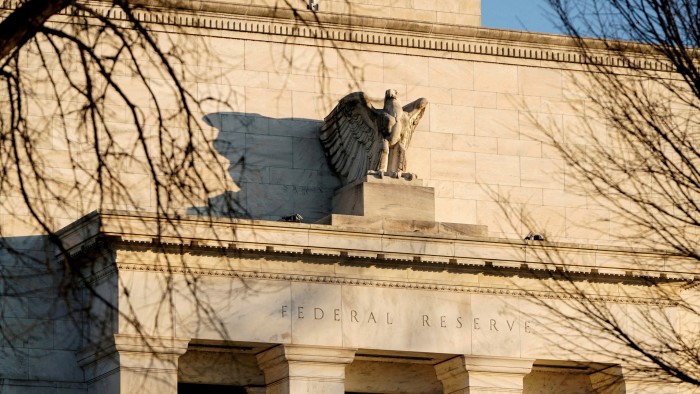- 54,900 Student-Loan Borrowers in PSLF Get $4B in Debt Cancellation
- RBI Warns Of Rising Bad Loans, Stresses Stronger Capital Reserves
- Sick leave, student loans, voting
- Why student loans could go into default payments in the new year
- $10 billion in government loans announced for EV companies – pv magazine USA
Unlock the Editor’s Digest for free
Bạn đang xem: Defaults on leveraged loans soar to highest in 4 years
Roula Khalaf, Editor of the FT, selects her favourite stories in this weekly newsletter.
US companies are defaulting on junk loans at the fastest rate in four years, as they struggle to refinance a wave of cheap borrowing that followed the Covid pandemic.
Defaults in the global leveraged loan market — the bulk of which is in the US — picked up to 7.2 per cent in the 12 months to October, as high interest rates took their toll on heavily indebted businesses, according to a report from Moody’s. That is the highest rate since the end of 2020.
The rise in companies struggling to repay loans contrasts with a much more modest rise in defaults in the high-yield bond market, highlighting how many of the riskier borrowers in corporate America have gravitated towards the fast-growing loan market.
Because leveraged loans — high yield bank loans that have been sold on to other investors — have floating interest rates, many of those companies that took on debt when rates were ultra low during the pandemic have struggled under high borrowing costs in recent years. Many are now showing signs of pain even as the Federal Reserve brings rates back down.
“There was a lot of issuance in the low interest rate environment and the high rate stress needed time to surface,” said David Mechlin, credit portfolio manager at UBS Asset Management. “This [default trend] could continue into 2025.”
Xem thêm : CFPB Signals Rulemaking Push for Nonbank Personal Loans
Punitive borrowing costs, together with lighter covenants, are leading borrowers to seek other ways to extend this debt.
In the US, default rates on junk loans have soared to decade highs, according to Moody’s data. The prospect of rates staying higher for longer — the Federal Reserve last week signalled a slower pace of easing next year — could keep upward pressure on default rates, say analysts.
Many of these defaults have involved so-called distressed loan exchanges. In such deals, loan terms are changed and maturities extended as a way of enabling a borrower to avoid bankruptcy, but investors are paid back less.
Such deals account for more than half of defaults this year, a historical high, according to Ruth Yang, head of private market analytics at S&P Global Ratings. “When [a debt exchange] impairs the lender it really counts as a default,” she said.
“A number of the lower rated loan-only companies that could not tap public or private markets had to restructure their debt in 2024, resulting in higher loan default rates than those of high-yield bonds,” Moody’s wrote in its report.
Portfolio managers worry that these higher default rates are the result of changes in the leveraged loan market in recent years.
“We’ve had a decade of uncapped growth in the leveraged loan market,” said Mike Scott, a senior high yield fund manager at Man Group. Many of the new borrowers in sectors such as healthcare and software were relatively light on assets, meaning that investors were likely to recover a smaller slice of their outlay in the event of a default, he added.
“[There has been] a wicked combination of a lack of growth and a lack of assets to recover,” thinks Justin McGowan, corporate credit partner at Cheyne Capital.
Xem thêm : HTX’s Flexible Crypto Loans Goes Viral and May Spark a New Lending Trend in the Bull Market
Despite the rise in defaults, spreads in the high-yield bond market are historically tight, the least since 2007 according to Ice BofA data, in a sign of investors’ appetite for yield.
“Where the market is now, we are pricing in exuberance,” said Scott.
Still, some fund managers think the spike in default rates will be shortlived, given that Fed rates are now falling. The US central bank cut its benchmark rate this month for the third meeting in a row.
Brian Barnhurst, global head of credit research at PGIM, said lower borrowing costs should bring relief to companies that had borrowed in the loan or high-yield bond markets.
“We don’t see a pick-up in defaults across either asset class,” he said. “To be honest, that relationship [between leveraged loans and high-yield bond default rates] diverged probably in late 2023.”
But others worry that distressed exchanges hint at underlying stresses and only put off problems until a later date. “[It’s] all well and good kicking the can down the road when that road goes downhill,” noted Duncan Sankey, head of credit research at Cheyne, referring to when conditions were more favourable for borrowers.
Some analysts blame loosening credit restrictions in loan documentation in recent years for allowing an increase in distressed exchanges that hurt lenders.
“You can’t put the genie back in the bottle. Weakened [documentation] quality has really changed the landscape, in favour of the borrower,” said S&P’s Yang.
Nguồn: https://marketeconomy.monster
Danh mục: News

